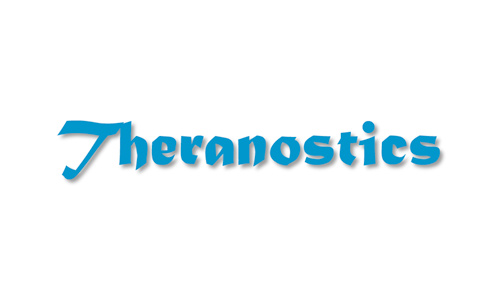- Follow Us
Publications
High-profile publications featuring CDI Labs products and services
274 Total Publications
Refine Your Search
Publication Details
- Date
- Link
- + Abstract

Theranostics
- Main Product: HuProt
- Chitinase-3 like-protein-1 promotes glioma progression via the NF-κB signaling pathway and tumor microenvironment reprogramming
- Ting Zhao, Jianming Zeng, Yujie Xu, Zhongping Su, Yulong Chong, Tao Ling, Haozhe Xu, Hui Shi, Minggao Zhu, Qi Mo,...
- Affiliated Cancer Hospital & Institute, Guangzhou Medical University
Chitinase-3-like protein 1 (CHI3L1) is overexpressed in various types of tumors, especially in glioma, and contributes to tumor progression. However, the definite role of CHI3L1 and involved pathway in glioma progression are not completely understood.

Biology - MDPI
- Main Product: HuProt
- HuProt: WDR73 Depletion Destabilizes PIP4K2C Activity and Impairs Focal Adhesion Formation in Galloway–Mowat Syndrome
- Hongyan Li, Lingqian Wu, et. al.
- Center for Medical Genetics, Hunan Key Laboratory of Medical Genetics & Hunan Key Laboratory of Animal Models for Human Disease, Central South University
HuProt PPI: Galloway–Mowat syndrome is a rare genetic disease, classically characterized by a combination of various neurological symptoms and nephrotic syndrome. WDR73 is the pathogenic gene responsible for Galloway–Mowat syndrome. However, the pathological and molecular mechanisms of Galloway–Mowat syndrome, especially nephrotic syndrome caused by WDR73 deficiency, remains unknown. In this study, we knocked out the WDR73 in human embryonic kidney 293 cells to observe the morphological characteristics of the cells and elucidate the functions of WDR73. Additionally, we used a combination of proteomics, transcriptomics, and biochemical assays to identify the regulated targets of WDR73.

Critical Reviews in Biotechnology
- Main Product: HuProt
- Recent advances in liposome development for studying protein-lipid interactions
- Samuel Herianto, Boopathi Subramani, Bo-Ruei Chen, Chien-Sheng Chen
- Chemical Biology and Molecular Biophysics, Taiwan International Graduate Program
Protein-lipid interactions are crucial for various cellular biological processes like intracellular signaling, membrane transport, and cytoskeletal dynamics. Therefore, studying these interactions is essential to understand and unravel their specific functions. Nevertheless, the interacting proteins of many lipids are poorly understood and still require systematic study. Liposomes are the most well-known and familiar biomimetic systems used to study protein-lipid interactions.

AACR - Clinical Cancer Research
- Main Product: HuProt
- Baseline Serum Autoantibody Signatures Predict Recurrence and Toxicity in Melanoma Patients Receiving Adjuvant Immune Checkpoint Blockade
- Paul Johannet, Wenke Liu, David Fenyo, Megan Wind-Rotolo, Michelle Krogsgaard, Janice M. Mehnert, Jeffrey S. Weber, Judy...
- Dept of Medicine, NYU Grossman School of Medicine
Adjuvant immunotherapy produces durable benefit for patients with resected melanoma, but many develop recurrence and/or immune-related adverse events (irAE). We investigated whether baseline serum autoantibody (autoAb) signatures predicted recurrence and severe toxicity in patients treated with adjuvant nivolumab, ipilimumab, or ipilimumab plus nivolumab.

Frontier in Pharmacology
- Main Product: HuProt
- HuProt: Sodium danshensu attenuates cerebral ischemia–reperfusion injury by targeting AKT1
- Qing Gao, Bin Yu, et. al.
- School of Integrative Medicine, Tianjin University of Traditional Chinese Medicine
HuProt Small Molecule: The beneficial properties of Sodium Danshensu (SDSS) for controlling cerebral ischemia and reperfusion injury (CIRI) are elucidated here both in vivo and in vitro. SDSS administration significantly improved the viability of P12 cells, reduced lactate dehydrogenase (LDH) leakage, and decreased the apoptosis rate following exposure to an oxygen-glucose deprivation/reoxygenation (OGD) environment. In addition, the results of a HuprotTM human protein microarray and network pharmacology indicated that AKT1 is one of the main targets of SDSS. Moreover, functional experiments showed that SDSS intervention markedly increased the phosphorylation level of AKT1 and its downstream regulator, mTOR.

Proteomics Clinical Applications
- Main Product: HuProt
- HuProt: Current advances in antibody-based serum biomarker studies: From protein microarray to phage display
- Huan Qi, Jun-biao Xue, Dan-yun Lai, Ang Li, Sheng-ce Tao
- Shanghai Center for Systems Biomedicine, Key Laboratory of Systems Biomedicine
HuProt Review: This review aims to summarize the technological advances in the field of antibody-based biomarker studies by proteome microarray and phage display. In addition, the possible development directions of this field are also discussed. With the help of tools/resources and technological advances in proteome microarray and phage display, the efficiency of profiling antibody-based biomarkers in serum samples has been greatly improved.

Journal of Clinical Oncology
- Main Product: HuProt
- Autoantibodies as potential biomarkers of immune-related adverse events in patients with advanced cutaneous melanoma treated with immune checkpoint inhibitors
- Aesha Gandhi, Pauline Zaenker, et. al.
- Centre for Precision Health, Edith Cowan University
HuProt Autoantibodies: The majority of patients treated with immune checkpoint inhibitors (ICIs) develop immune-related adverse events (irAE). It is currently not possible to predict the development of irAEs using biomarkers. Here we evaluated the IgG autoantibodies (AAbs) profile in pre-treatment sera of cutaneous metastatic melanoma patients treated with ICIs to identify AAbs that are associated with irAEs.

Annals of Oncology
- Main Product: HuProt
- Previous viral infections assessed by pan-virus phage immunoprecipitation sequencing (PhIP-Seq) predict response to immune checkpoint blockers (ICBs) in non-small cell lung cancer (NSCLC)
- F.G. Dall'Olio, B. Besse, et. al.
- Medical Oncology Department, Institut Gustave Roussy
ICBs revolutionized the treatment of advanced NSCLC patients but only a fraction of them obtain a response and clinical benefit from ICBs is often difficult to predict. Viral infections, whether acute, chronic or latent, have an impact on the immune system but their effect on ICBs efficacy is unknown. The aim of our study is to unveil the potential implications of antibody response to previous viral infections in predicting the response to ICBs in NSCLC patients.

Proteomics Clinical Applications
- Main Product: HuProt
- HuProt: Evaluation of autoantibody signatures in pituitary adenoma patients using human proteome arrays
- Arghya Banerjee, Sanjeeva Srivastava, et. al.
- Dept of Biosciences and Bioengineering, Indian Institute of Technology
To identify the specific diagnostic biomarkers related to pituitary adenomas (PAs), we performed serological antibody profiles for three types of PAs, namely Acromegaly, Cushing\'s and Nonfunctional Pituitary Adenomas (NFPAs), using the human proteome (HuProt) microarray. This is the first study describing the serum autoantibody profile of PAs.

BMC - Cell & Bioscience
- Main Product: HuProt
- HuProt: FBXL17/spastin axis as a novel therapeutic target of hereditary spastic paraplegia
- Hyun Mi Kang, Jung Hwa Lim, et. al.
- Korea Research Institute of Bioscience and Biotechnology
HuProt PPI: Spastin significantly influences microtubule regulation in neurons and is implicated in the pathogenesis of hereditary spastic paraplegia (HSP). However, post-translational regulation of the spastin protein remains nebulous. The association between E3 ubiquitin ligase and spastin provides a potential therapeutic strategy.